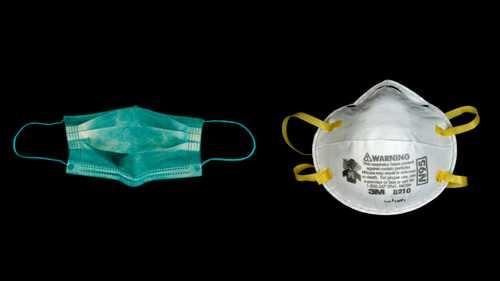Face Masks: What Doctors Say About Their Role
Curated from: npr.org
Ideas, facts & insights covering these topics:
2 ideas
·338 reads
2
Explore the World's Best Ideas
Join today and uncover 100+ curated journeys from 50+ topics. Unlock access to our mobile app with extensive features.
Protection By Face Masks
Due to the Wuhan virus spreading across the world, the use of face masks might seem a good means of protection.
The N95 mask, which is a heavy-duty mask offers better protection (95% of airborne particles are blocked) but is uncomfortable to be worn for long periods as it gets difficult to breathe.
The more common and disposable surgical masks are comfortable to wear and are more easily available than the N95 ones, but offer meagre protection, especially against airborne pathogens.
57
176 reads
Protect Yourself Wisely
- Cloth masks, which are reusable and washable, offer no real protection while being potentially harmful in case there is any moisture retention or dirt in them due to their being reused.
- It is a good practice to wear a mask all the time, especially if you have any respiratory illness.
- It is advisable to be careful while removing your mask, as a mere touch of your hands on the front of the mask can contaminate it.
- It is also advisable not to touch your face or nose too much.
- Constantly and frequently wash your hands, all year round, and get a flu shot, as it is flu season. While a flu shot is not a protection against the virus, it is still advisable to get one.
58
162 reads
IDEAS CURATED BY
Wannabe explorer. Tv nerd. Communicator. All about healthy food and healthy living.
Brianna R.'s ideas are part of this journey:
Learn more about health with this collection
How to overcome unwanted thoughts
How to manage intrusive thoughts
How to change your attitude towards intrusive thoughts
Related collections
Similar ideas
5 ideas
The untold origin story of the N95 mask
fastcompany.com
3 ideas
3 ideas
Helping Others Can Help You Cope with Lockdown
greatergood.berkeley.edu
Read & Learn
20x Faster
without
deepstash
with
deepstash
with
deepstash
Personalized microlearning
—
100+ Learning Journeys
—
Access to 200,000+ ideas
—
Access to the mobile app
—
Unlimited idea saving
—
—
Unlimited history
—
—
Unlimited listening to ideas
—
—
Downloading & offline access
—
—
Supercharge your mind with one idea per day
Enter your email and spend 1 minute every day to learn something new.
I agree to receive email updates
